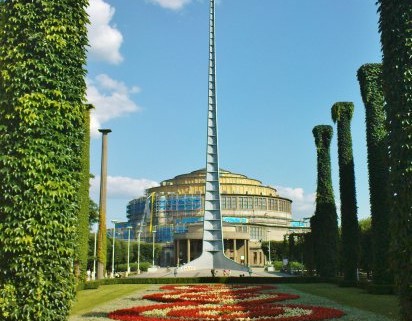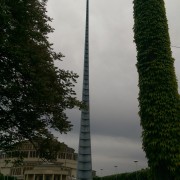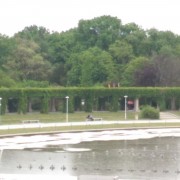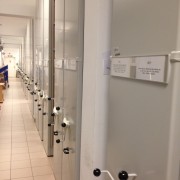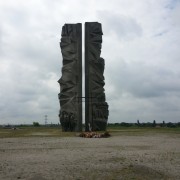Centennial Hall, Hope from the Past, a quiet message for the Future
By Elon Clarke
Begun as a space for the general public of Germany to meet and gather together under a monument of victory over Napoleon, Centennial Hall in Wroclaw is a space with a rich history, famous present and inspirational future. Centennial Hall is a kind of mega-community center that Wroclavians are proud of and it shows not only through its history but through its present upkeep and the investment of time and money that keep it a beautiful and inviting place of togetherness.
As Breslau became Wroclaw, Centennial Hall needed to be spruced up and adopted into its new Polish home and family. It stood not only as a beacon of hope for a new Poland and its people, a towering accomplishment among a city in ruin, but it also offered other benefits once being redone and renovated. While somewhat controversial due to its German roots, it stands now not only as a place for the local population to come and be with each other but it also places Wroclaw on the map for business and tourism. Wroclaw had to compete with America, France and Britain who had plenty of tourist attractions, as in cash flow, while Wroclaw was still yearning for some extra source of income especially while still recovering from the War.
In the mind of Max Berg, this was to be a “Cathedral of Democracy”, a place for the people regardless of class, income or education. In this place ideals and ideas could be shared, picked apart and made better; people could discuss opera, physical art, enjoy the outdoors and fresh air because they could.
As it was remodeled and rebuilt it stood for a place that could be a symbol of a national identity. Not just in name like the White House or the Capitol building. These places have come to symbolize America, but they are not an open place for the public to freely roam, share ideas and experience culture. Centennial Hall fulfills this role not only in name but also in use. It seamlessly joins past and present as a testament and physical representation of Polish pride. When you enter the grounds of Centennial Hall you’re greeted with a beautiful garden of well landscaped colorful flowers in bloom and a towering well maintained edifice. Everywhere one looks there is beauty and space to flourish.
Is there a lesson to be learned from Centennial Hall as it stands now? And if so, what is it?
There is more to Centennial Hall than the reasons why it was inscribed on the UNESCO World Heritage List- its innovative use of reinforced concrete as well as the size of its dome. UNESCO Heritage sites are kept and protected not only because of their uniqueness in history but also what they can stand to teach humanity and what they can continue to teach humanity.
This Centennial Hall is for all of Wroclaw, which is clearly proud of it. At home I’d be loath to see the same pride and upkeep around the “community centers” that dot Jamaica, New York. Local community centers ache for TLC and the patrons are hard pressed to find real love in the center aside from the teaching and healing soul they might meet. Instead of prideful upkeep, you’re met with institutional lighting and cracked linoleum flooring.
Rather than a proud appeal to community, far too many community centers are more like a toy to crying toddlers. Thrown together to appease an aching community with as little expense as possible. Looking at Centennial Hall, I know there is so much potential for Community Centers of all kinds at home, especially those in aching and hopeless town that just need a place to come together and learn and feel better about where they live. Centennial Hall functioned not only a place to share culture but also as a marketplace of sorts as well. How the economy could flourish if Community Centers at home were given the same treatment? Billions upon billions of dollars are constantly being spent and wasted on “post-illness treatment” when they could be going straight toward “preventative medicine” which is far less costly proverbially and literally. Pride in these halls and centers would foster so many positives in communities throughout America, not just the towns that can presently afford the best of the best.
The American people would finally be able to identify as the American people should such a radical switch of priority take place. Where the people come first rather than the economy or America’s perceived first place spot in the World. In this way Centennial Hall very well serves as a quiet example as Max Berg rightly thought it would.

